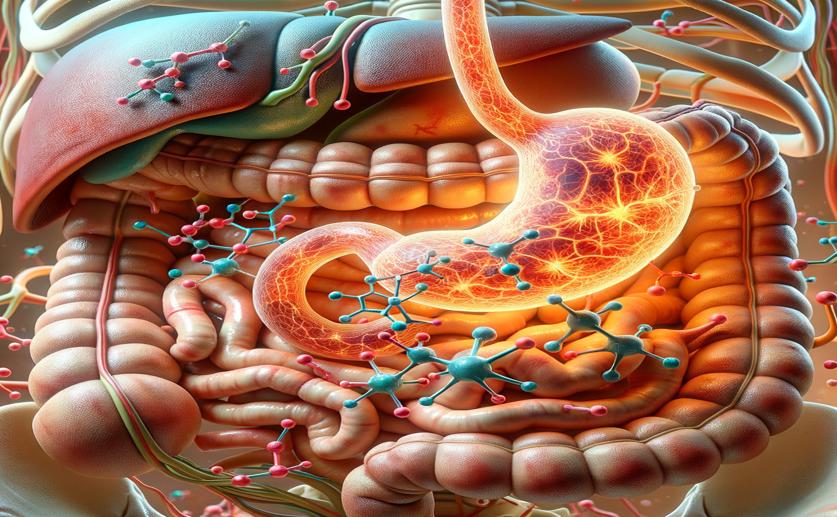
Ginsenoside Rg1 Reduces Cell Inflammation to Help Chronic Stomach Inflammation
Jim Crocker
11th June, 2024

Image Source: Natural Science News, 2024
Key Findings
- Researchers at Shanghai University of Traditional Chinese Medicine found that ginsenoside Rg1 can reduce inflammation and oxidative stress in chronic atrophic gastritis (CAG)
- Rg1 was shown to improve cell structure and function by counteracting pyroptosis, a harmful form of cell death
- The study identified that Rg1 works by regulating the NF-κB/NLRP3/GSDMD pathway, which is crucial in controlling inflammation and pyroptosis
References
Main Study
1) Ginsenoside Rg1 Suppresses Pyroptosis via the NF-κB/NLRP3/GSDMD Pathway to Alleviate Chronic Atrophic Gastritis In Vitro and In Vivo.
Published 10th June, 2024
https://doi.org/10.1021/acs.jafc.4c01271
Related Studies
2) Ginsenoside Rg1 prevent and treat inflammatory diseases: A review.
3) Ginsenoside Rg1 in neurological diseases: From bench to bedside.
4) Ginsenoside Rg1 and the control of inflammation implications for the therapy of type 2 diabetes: A review of scientific findings and call for further research.
5) Hepataprotective effects of ginsenoside Rg1 - A review.



 6th June, 2024 | Jenn Hoskins
6th June, 2024 | Jenn Hoskins